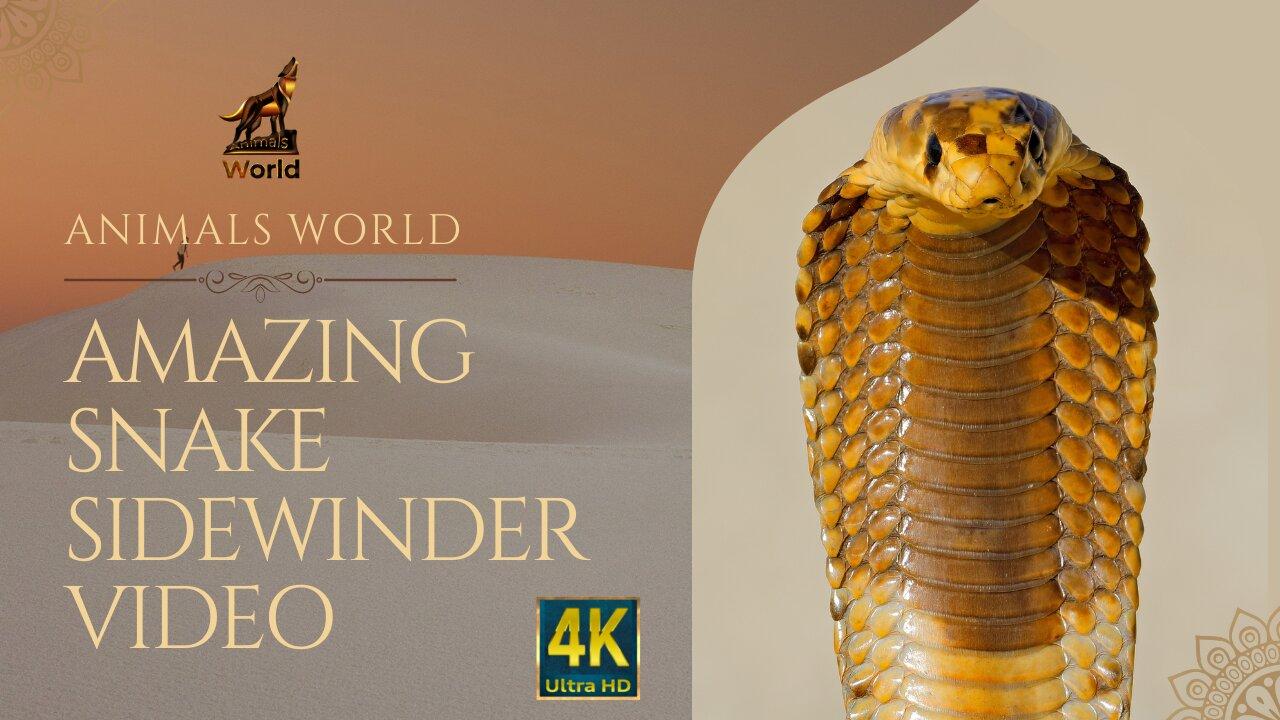Amazing Snake video in the desert 🏜 Animals World

Amazing Snake video in the desert 🏜 Animals World
Animals World It is a place for everyone who loves animals and is interested in nature #snake video our goal is to make our followers feel relax and have fun while watching animals Animals World, Snake, 4K Ultra HD Snakes are elongated, limbless, carnivorous reptiles of the suborder Serpentes /sɜːrˈpɛntiːz/.[2] Like all other squamates, snakes are ectothermic, amniote vertebrates covered in overlapping scales.
Many species of snakes have skulls with several more joints than their lizard ancestors, enabling them to swallow prey much larger than their heads (cranial kinesis).
To accommodate their narrow bodies, snakes' paired organs (such as kidneys) appear one in front of the other instead of side by side, and most have only one functional lung.
Some species retain a pelvic girdle with a pair of vestigial claws on either side of the cloaca.
Lizards have evolved elongate bodies without limbs or with greatly reduced limbs about twenty-five times independently via convergent evolution, leading to many lineages of legless lizards.[3] These resemble snakes, but several common groups of legless lizards have eyelids and external ears, which snakes lack, although this rule is not universal (see Amphisbaenia, Dibamidae, and Pygopodidae).
Living snakes are found on every continent except Antarctica, and on most smaller land masses; exceptions include some large islands, such as Ireland, Iceland, Greenland, the Hawaiian archipelago, and the islands of New Zealand, as well as many small islands of the Atlantic and central Pacific oceans.[4] Additionally, sea snakes are widespread throughout the Indian and Pacific oceans.
More than twenty families are currently recognized, comprising about 520 genera and about 3,900 species.[5] They range in size from the tiny, 10.4 cm-long (4.1 in) Barbados threadsnake[6] to the reticulated python of 6.95 meters (22.8 ft) in length.[7] The fossil species Titanoboa cerrejonensis was 12.8 meters (42 ft) long.[8] Snakes are thought to have evolved from either burrowing or aquatic lizards, perhaps during the Jurassic period, with the earliest known fossils dating to between 143 and 167 Ma ago.[9][10] The diversity of modern snakes appeared during the Paleocene epoch (c.
66 to 56 Ma ago, after the Cretaceous–Paleogene extinction event).
The oldest preserved descriptions of snakes can be found in the Brooklyn Papyrus.
Most species of snake are nonvenomous and those that have venom use it primarily to kill and subdue prey rather than for self-defense.
Some possess venom that is potent enough to cause painful injury or death to humans.
Nonvenomous snakes either swallow prey alive or kill by constriction.
The English word snake comes from Old English snaca, itself from Proto-Germanic *snak-an- (cf.
Germanic Schnake 'ring snake', Swedish snok 'grass snake'), from Proto-Indo-European root *(s)nēg-o- 'to crawl to creep', which also gave sneak as well as Sanskrit nāgá 'snake'.[11] The word ousted adder, as adder went on to narrow in meaning, though in Old English næddre was the general word for snake.[12] The other term, serpent, is from French, ultimately from Indo-European *serp- 'to creep',[13] which also gave Ancient Greek ἕρπω (hérpō) 'I crawl The fossil record of snakes is relatively poor because snake skeletons are typically small and fragile making fossilization uncommon.
Fossils readily identifiable as snakes (though often retaining hind limbs) first appear in the fossil record during the Cretaceous period.[15] The earliest known true snake fossils (members of the crown group Serpentes) come from the marine simoliophiids, the oldest of which is the Late Cretaceous (Cenomanian age) Haasiophis terrasanctus,[1] dated to between 112 and 94 million years old.[16] Based on comparative anatomy, there is consensus that snakes descended from lizards.[17]: 11 [18] Pythons and boas—primitive groups among modern snakes—have vestigial hind limbs: tiny, clawed digits known as anal spurs, which are used to grasp during mating.[17]: 11 [19] The families Leptotyphlopidae and Typhlopidae also possess remnants of the pelvic girdle, appearing as horny projections when visible.
Front limbs are nonexistent in all known snakes.
This is caused by the evolution of their Hox genes, controlling limb morphogenesis.
The axial skeleton of the snakes' common ancestor, like most other tetrapods, had regional specializations consisting of cervical (neck), thoracic (chest), lumbar (lower back), sacral (pelvic), and caudal (tail) vertebrae.
Early in snake evolution, the Hox gene expression in the axial skeleton responsible for the development of the thorax became dominant.
As a result, the vertebrae anterior to the hindlimb buds (when present) all have the same thoracic-like identity (except from the atlas, axis, and 1–3 neck vertebrae).
In other words, most of a snake's skeleton is

![Funny Animals fails😹 #comedy #laughter #funny video [Video]](https://video.newsserve.net/300/v/20220831/1661926237-Funny-Animals-fails😹-comedy-laughter-funny-video.jpg)
![4K animals video amazing shorts 5 [Video]](https://video.newsserve.net/300/v/20220830/1661848273-4K-animals-video-amazing-shorts.jpg)
![Baby Cats - Cute and Funny Cat Videos Compilation #52 | Aww Animals [Video]](https://video.newsserve.net/300/v/20220829/1661775145-Baby-Cats-Cute-and-Funny-Cat-Videos.jpg)